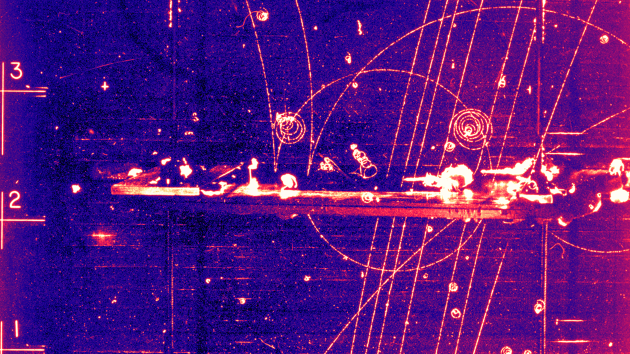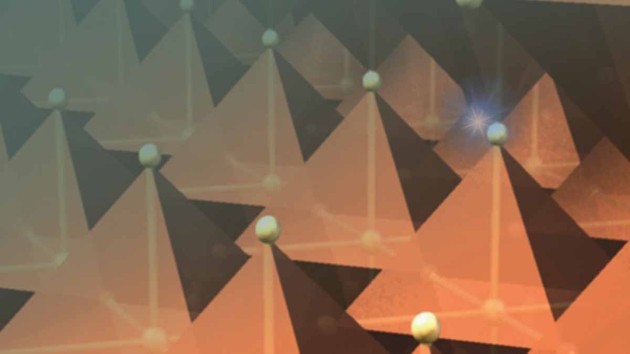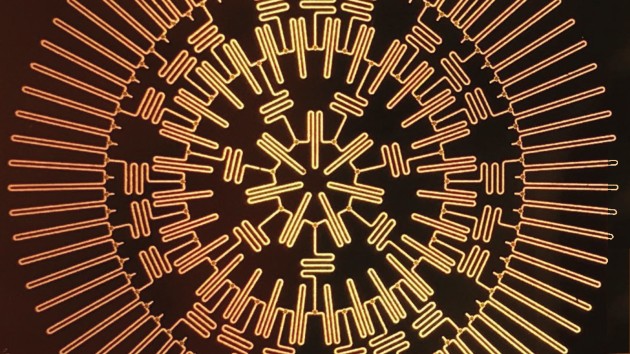Collection |
Collections
Filters
-
Collection Type
-
-
Collection |
 Harnessing the power of computational science
Harnessing the power of computational science
The use and development of sophisticated computing capabilities to analyse and solve real-world, challenging problems has undoubtedly revolutionized the way researchers do science.
-
Collection |
 Nobel Prize in Physics 2020
Nobel Prize in Physics 2020
We present this Collection of research, review and comment from Nature Research to celebrate the award of the 2020 Nobel Prize in Physics to Roger Penrose “for the discovery that black hole formation is a robust prediction of the general theory of relativity” and to Reinhard Genzel and Andrea Ghez “for the discovery of a supermassive compact object at the centre of our Galaxy”.
Image: Springer Nature/The Nobel Foundation/Imagesource -
Collection |
40 years of the quantum Hall effect
The discovery of the quantum Hall effect in 1980 marked a turning point in condensed matter physics.
Image: Image courtesy of Vidya Madhavan, Illinois University -
Focus |
 Emergent superconductivity
Emergent superconductivity
A Focus on research in emergent superconductivity by Nature Physics
-
Focus |
 European Strategy for Particle Physics
European Strategy for Particle Physics
The European Strategy for Particle Physics is the decision-making process underpinning the long-term future of particle physics in Europe. This Focus issue outlines the main proposals under consideration for the 2020 update to the strategy.
Image: Science Source/SCIENCE PHOTO LIBRARY -
-
Collection |
 Networks
Networks
Network science is now a mature research field, whose growth was catalysed by the introduction of the ‘small world’ network model in 1998.
Image: Kiyoshi Takahase Segundo / Alamy Stock Photo -
Collection |
 Nobel Prize in Physics 2019
Nobel Prize in Physics 2019
We present this Collection of research, review and comment from Nature Research to celebrate the award of the 2019 Nobel Prize in Physics to James Peebles “for theoretical discoveries in physical cosmology” and to Michel Mayor and Didier Queloz “for the discovery of an exoplanet orbiting a solar-type star”. Together, these discoveries have changed the way we view the Universe, and our place within it.
Image: Springer Nature/The Nobel Foundation/Imagesource -
Collection |
 Perovskites for Optoelectronics
Perovskites for Optoelectronics
Perovskite materials have become very promising candidates for a new generation of potentially printable and efficient optoelectronic devices. Photovoltaic devices based on hybrid perovskites now achieve more than 20% photoconversion efficiency, and applications in solid-state lighting, photodetection and lasing are soaring. Their optoelectronic and photophysical properties are under intense scrutiny. This web-collection brings together a selection of multi-disciplinary research and comments published in the Nature journals that explores the basic properties of halide-based perovskite materials and their potential for application in optoelectronics, from solar cells to lasers. It serves to illustrate the road to easily processable and efficient devices by presenting both historical milestones and the crucial landmark studies published in the last 12 months in the Nature journals.
-
Collection |
Viewpoints on data and code sharing
The increased sharing of data and code is often presented as an important part of the future of research, but the details of how best to implement this can be difficult to determine. In February, we published and editorial where we discussed our view on these issues and asked the physics community to share their opinions with us. Here, we collect the feedback that we published along with a second editorial that summarises our response and our plans to encourage more extensive sharing of data in the future.
Image: EThamPhoto / Alamy Stock Photo -
Collection |
 Nuclear research, industry and policy
Nuclear research, industry and policy
In this collection we explore current trends in nuclear research, industry and policy in Comment and Review articles from Nature Reviews Physics, Nature Energy and Nature Physics.
Image: Carl Conway/Springer Nature Limited

 Sensing at the limit
Sensing at the limit
 cQED
cQED